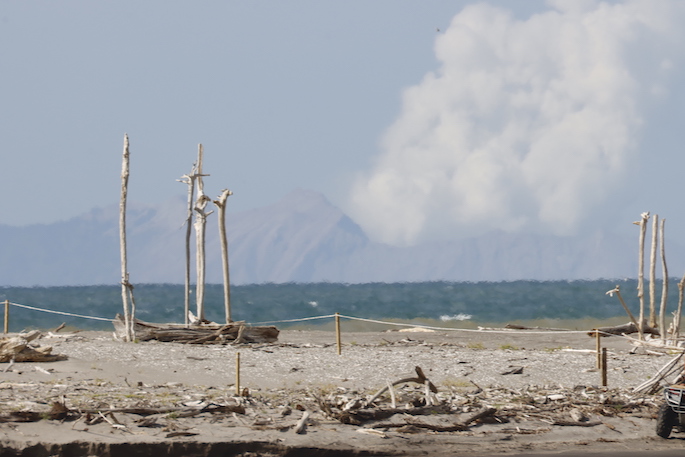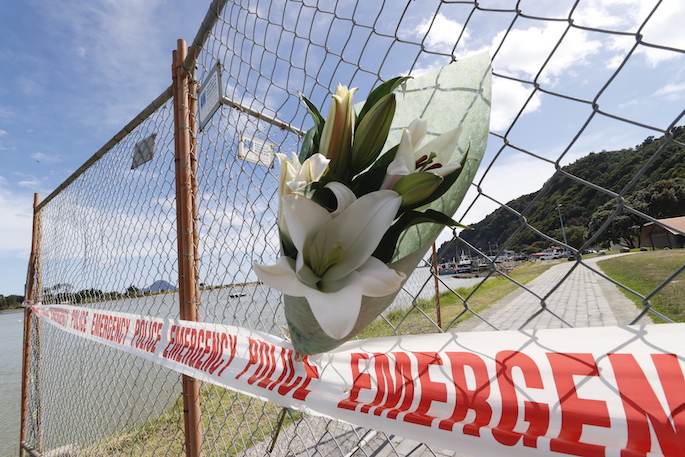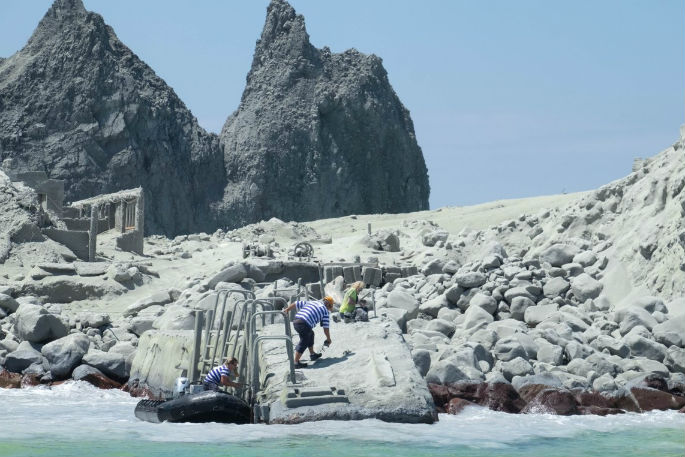Twenty-two people died and 25 others were injured when Whakaari White Island erupted offshore from Whakatāne on December 9, 2019.
Many were tourists visiting the island via local charter tours.
Boats and helicopters braved the billowing smoke and ash to rescue as many survivors as they could.
What unfolded among agencies afterwards has now been reviewed by independent consultants, who say there are many lessons to be learned. Kiri Gillespie reports.
Bay of Plenty authorities’ handling of the Whakaari White Island tragedy was hampered by tensions between agencies, widespread grief and trauma, “relentless” media interest and pressure to inform the Government, a review has found.
It also found it could take “many years or decades for communities to fully recover”.
The review into the Whakaari recovery, commissioned by Emergency Management Bay of Plenty, found the handling of the eruption was “effective and consistent” with national legislation and guidance but raised several issues.
In their findings, the consultants said there was a lack of common understanding involving roles and responsibilities and a lack of clarity about how a locally led response was delivered.
There was also “confusion” about governance and leadership because the eruption happened on private land. Iwi also grappled to find their place in emergency management and there was overwhelming national and international interest, including media and politicians.
The review said some people felt the response involved a “system failure”.
“There was little or no national recovery co-ordination and no solid plan to support this [response] at all levels. This does not mean individual government agencies did not perform well but rather that the system as a whole is not as strong as it could be,” the review concluded.
Interviews suggested that there was tension at times between agencies.
In addition to the disruption from Covid-19 restrictions, there was a “constant churn” of response staff, which had a “strong impact” on the trust needed for social recovery. Court cases also presented a challenge, the review said.
“On top of the widespread grief and trauma experienced by those who had rescued and responded, and many who were now working in [response], the prospect of pending charges and inquiries added another level of stress and uncertainty.”
“During the interviews for this review, it was evident that this is still a deep-seated trauma for many of those involved in this event. So much so that the authors of the report felt this should be highlighted.”

The review said media interest was “overwhelming”, “intense and relentless” and took a toll on staff.
“At times, the [response] team felt that the community was saturated with media coverage and it was difficult to get recovery messages out to the community.
“This was a highly sensitive and political [response] with wide local, national and international interest. Confidentiality, at times, caused tensions between agencies.”
Pressure to inform the Government was also a distraction, they found.
The role of the Department of Internal Affairs in providing administration for Whakaari on behalf of the Minister of Local Government resulted in “confusion and a lack of clarity”. A disconnection between authorities and mana whenua was also highlighted.
“The review hears that when manuhiri (visitors) lose their lives on iwi whenua (land), it is very difficult for iwi to come to terms with that. Mana diminishing, so not having iwi actively involved in all facets of response and recovery, reduced their ability to restore mana and recover as an iwi. Ngāti Awa reported that it is ‘spiritually still difficult’.”
The review said Ngāti Awa’s connection and sense of responsibility was “not well understood before or during the response and recovery”.
The iwi felt it was talking a “different language” to authorities and that it was “pigeon-holed” as a welfare organisation, stifling the chance to restore wellbeing and missing “significant opportunities for community connection”, the review said.
On the first anniversary of the eruption, a public commemoration service was held in Whakatāne. Covid-19 prevented any second-anniversary events but, on the third anniversary, another service was held in Whakatāne. Some agencies involved with the rescue, response and recovery were not aware of this and felt excluded. Others chose not to take part and some held their own events, the review said.
It recommended continued support until at least the fifth anniversary and some interviewees believed consideration should be given to a physical memorial.
It was difficult to define the end of response efforts as it could take “many years or decades for communities to fully recover”, the review said.
Despite the challenges, it found Civil Defence staff, iwi, the council and other stakeholders involved “should be congratulated on their efforts under very trying circumstances ... this was a particularly challenging and tough recovery”.
It found the Bay of Plenty Group Recovery Action Plan was “comprehensive”. However, it “focused on outputs rather than recovery outcomes, therefore a clear line of sight to the anticipated result was not clear”.

“In addition, the impact on the wider community was not fully understood or acknowledged. It was reported during the review that the wider community was significantly impacted by the emergency – and continues to be.”
The review recommended 25 lessons to help improve potential future responses.
These included looking at overseas examples of “recovery” systems, developing practical response guidelines and ensuring these are “understood by all stakeholders”, considering how to publicly acknowledge and thank rescue and response workers, and seeking national-level guidance about iwi’s role and participation in emergency management.
Bay of Plenty Civil Defence Emergency Management Co-ordinating Executive Group has now authorised a Whakaari White Island recovery review action plan to be developed to address the key lessons and manage risks identified by the review.
Clinton Naude, director of Emergency Management Bay of Plenty, told the Bay of Plenty Times its response or “recovery” operation was crucial but also “a very hard thing to get right – even harder in some ways than an emergency response”.
This was already challenging because of the loss of life and ongoing trauma but also because of prosecutions “and the degree of sadness and pain shared by people in the community”.
Whakatāne District Council and Ngāti Awa have been approached for comment.



0 comments
Leave a Comment
You must be logged in to make a comment.